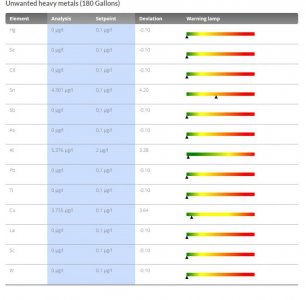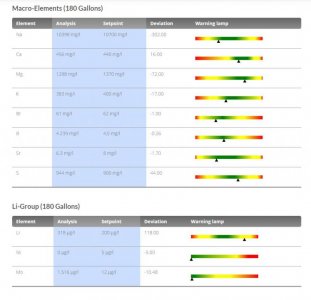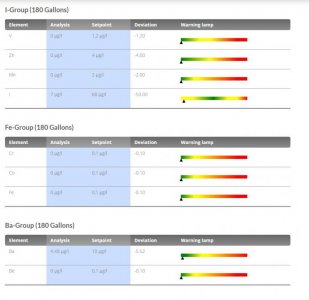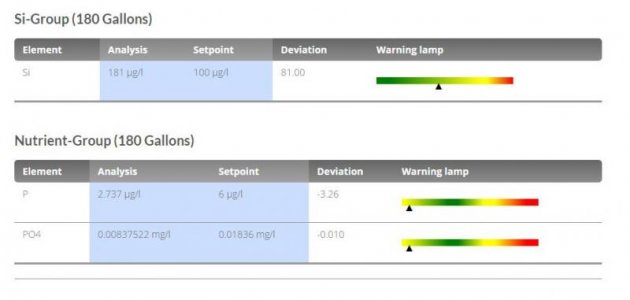codydemmel4
Active member
Just got my Triton test back.
I am a little worried about my Tin, Copper and Lithium being high, are these normal levels in an aquarium or should I be worried?
I checked all my pumps, etc and found no metal so I am not sure where it could be coming from. Any suggestions?
I am dosing is 2 part from BRS, acropower, Flatworm stop and coral booster.
I am thinking about taking my gfo offline since my phosphates are so low, or should I just take a majority of the gfo out of the reactor. I like the thought of the gfo as I think you have more control of the levels compared to just letting it be. I dont have any carbon in my system. Just gfo, skimmer and cheato
I am a little worried about my Tin, Copper and Lithium being high, are these normal levels in an aquarium or should I be worried?
I checked all my pumps, etc and found no metal so I am not sure where it could be coming from. Any suggestions?
I am dosing is 2 part from BRS, acropower, Flatworm stop and coral booster.
I am thinking about taking my gfo offline since my phosphates are so low, or should I just take a majority of the gfo out of the reactor. I like the thought of the gfo as I think you have more control of the levels compared to just letting it be. I dont have any carbon in my system. Just gfo, skimmer and cheato












